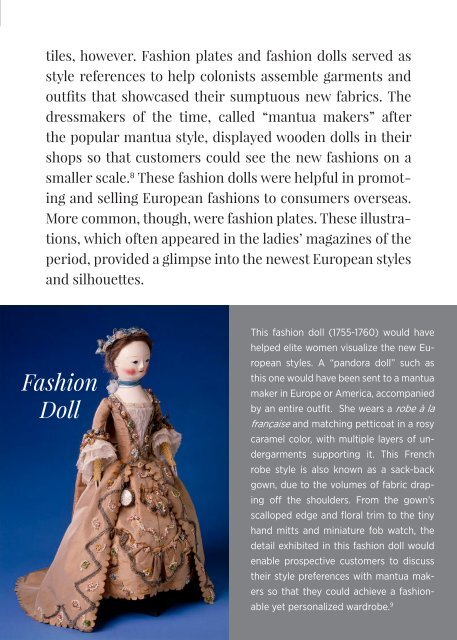The Fleece of Their Flock: Homespun & the American Identity
This interdisciplinary thesis project was researched, written, and designed by Jessica Vodnik and submitted in fulfillment of the Honors Senior Capstone requirement for the DePaul University Honors Program. Please do not copy, reproduce, or distribute without permission. Dr. Amy Tyson, Director, American Studies Dr. John Burton, Second Reader, History Undergraduate Honors Senior Thesis DePaul University, Chicago, IL May 10, 2015
This interdisciplinary thesis project was researched, written, and designed by Jessica Vodnik and submitted in fulfillment of the Honors Senior Capstone requirement for the DePaul University Honors Program. Please do not copy, reproduce, or distribute without permission.
Dr. Amy Tyson, Director, American Studies
Dr. John Burton, Second Reader, History
Undergraduate Honors Senior Thesis
DePaul University, Chicago, IL
May 10, 2015
Create successful ePaper yourself
Turn your PDF publications into a flip-book with our unique Google optimized e-Paper software.
tiles, however. Fashion plates and fashion dolls served as<br />
style references to help colonists assemble garments and<br />
outfits that showcased <strong>the</strong>ir sumptuous new fabrics. <strong>The</strong><br />
dressmakers <strong>of</strong> <strong>the</strong> time, called “mantua makers” after<br />
<strong>the</strong> popular mantua style, displayed wooden dolls in <strong>the</strong>ir<br />
shops so that customers could see <strong>the</strong> new fashions on a<br />
smaller scale. 8 <strong>The</strong>se fashion dolls were helpful in promoting<br />
and selling European fashions to consumers overseas.<br />
More common, though, were fashion plates. <strong>The</strong>se illustrations,<br />
which <strong>of</strong>ten appeared in <strong>the</strong> ladies’ magazines <strong>of</strong> <strong>the</strong><br />
period, provided a glimpse into <strong>the</strong> newest European styles<br />
and silhouettes.<br />
Fashion<br />
Doll<br />
This fashion doll (1755-1760) would have<br />
helped elite women visualize <strong>the</strong> new European<br />
styles. A “pandora doll” such as<br />
this one would have been sent to a mantua<br />
maker in Europe or America, accompanied<br />
by an entire outfit. She wears a robe à la<br />
française and matching petticoat in a rosy<br />
caramel color, with multiple layers <strong>of</strong> undergarments<br />
supporting it. This French<br />
robe style is also known as a sack-back<br />
gown, due to <strong>the</strong> volumes <strong>of</strong> fabric draping<br />
<strong>of</strong>f <strong>the</strong> shoulders. From <strong>the</strong> gown’s<br />
scalloped edge and floral trim to <strong>the</strong> tiny<br />
hand mitts and miniature fob watch, <strong>the</strong><br />
detail exhibited in this fashion doll would<br />
enable prospective customers to discuss<br />
<strong>the</strong>ir style preferences with mantua makers<br />
so that <strong>the</strong>y could achieve a fashionable<br />
yet personalized wardrobe. 9<br />
- 19 -


